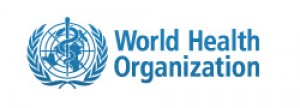WHO’s new recommendations on contraceptive use and HIV
WHO’s new recommendations on contraceptive use and HIV

The World Heath Organization today issued revised recommendations for women who are at high risk for HIV/AIDS and who are using injectable hormonal contraceptives. The new recommendations come on the heels of a study published last October in The Lancet Infectious Diseases, which found that women using these contraceptives, which are particularly popular in eastern and southern Africa, were at twice the risk of contracting HIV, although the absolute rate of infection was relatively low. HIV-positive women using the contraceptives also were found to be more likely to infect their partners.
The widely publicized study generated considerable concern, as millions of women are using these progesterone-only contraceptives in Africa, where HIV rates are among the highest in the world. The results prompted the WHO in January to convene a group of 75 experts from around the world to review the issue. The group found that the evidence wasn’t conclusive – as some studies didn’t find the same association and many of the studies were limited in their design.
The panel concluded that there should continue to be no restrictions on use of these contraceptives but it added a clarification to these recommendations, strongly advising HIV-positive women or those at risk of HIV to use condoms and other forms of protection.
Paul Blumenthal, MD, a professor of obstetrics and gynecology at Stanford who served on the panel, said the group sought to re-emphasize the importance of dual protection to minimize the risk of HIV transmission. He told me today:
It is also important to note that decreases in use of hormonal contraceptives, perhaps as a result of concern about HIV risk, may result in increased rates of unintended pregnancy, which, especially in areas where HIV risk is high, also carries increased risks associated with unsafe abortion and high maternal mortality. Thus, the revised recommendations represent an important balancing of the complex relationships between contraception, HIV risks and pregnancy-related risks.
By Ruthann Richter
Stanford University Medical Center
###
* Stanford University Medical Center integrates research, medical education and patient care at its three institutions – Stanford University School of Medicine, Stanford Hospital & Clinics and Lucile Packard Children’s Hospital.
** The above story is adapted from materials provided by Stanford University School of Medicine
________________________________________________________________




















